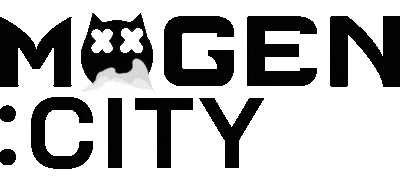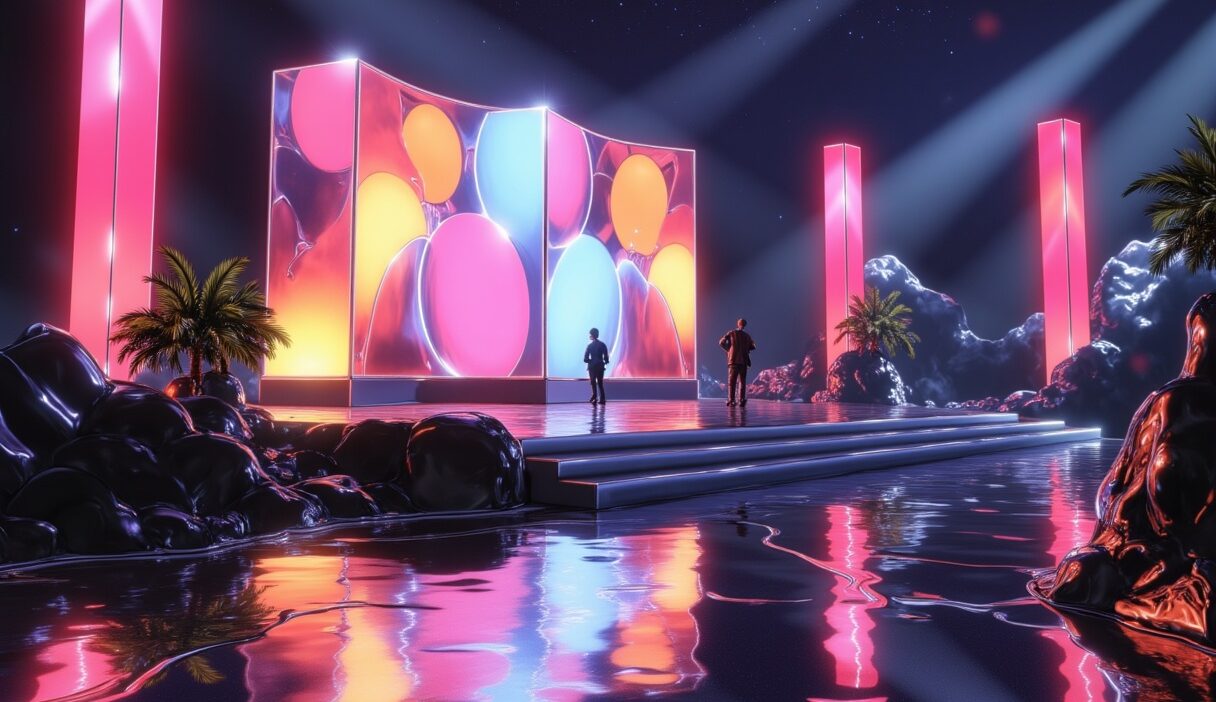Introduction: Welcome to the Digital Dancefloor
Forget the sticky floors, overpriced drinks, and long queues. For Gen Z, the future of live music might be a browser tab away. Virtual concerts and NFT albums are transforming how fans experience, own, and interact with music — redefining what it means to attend a gig, buy an album, or even support an artist.
Thanks to metaverse platforms like Fortnite, Roblox, and Decentraland, and blockchain innovations that enable tokenized music assets, the concert hall is now a pixelated, immersive, and borderless world. With VR headsets, crypto wallets, and TikTok feeds, Gen Z isn’t just attending these shows — they’re co-creating them.
This article explores how Gen Z is reshaping live music through digital tech, why NFTs matter for musicians and fans, and what the future of performance looks like when raving is just a few clicks away.
1. The Rise of the Virtual Concert
The first major spark came in 2020, when Travis Scott’s Fortnite concert drew over 12 million viewers inside a video game. This wasn’t a livestream — it was an interactive, gamified concert where fans flew through space, danced underwater, and witnessed an enormous Travis avatar tower over them.
Since then:
- Ariana Grande hosted a dreamy Fortnite tour.
- Lil Nas X played to tens of millions on Roblox.
- WaveXR has partnered with artists like The Weeknd to create virtual stage sets.
These aren’t just gimmicks. They represent a new frontier in performance, where musicians can play to global audiences simultaneously, unconstrained by venue size or ticket logistics.
2. Why Gen Z is All In
Gen Z, raised on YouTube, Twitch, and digital hangouts, see virtual spaces as natural extensions of real life.
- Social interaction: Concerts become chatrooms, game lobbies, and meme-fests.
- Personalization: Avatars, skins, and digital merch turn fans into participants.
- Inclusivity: No need for travel, no dress codes, no physical limits.
Add in a pandemic-fueled shift to digital everything, and it’s no surprise Gen Z is trading IRL raves for virtual stage dives.
3. Music in the Metaverse: The Platforms Leading the Way
| Platform | Notable Artists | Key Features |
|---|---|---|
| Fortnite | Travis Scott, Ariana Grande | Cinematic concert experiences, millions of concurrent viewers |
| Roblox | Lil Nas X, Zara Larsson | Interactive music-themed games, merch integration |
| Decentraland | 3LAU, Grimes | Blockchain-based ownership, NFT ticketing, wearable merch |
| WaveXR | Lindsey Stirling, The Weeknd | Full-body avatars, real-time interactions, immersive visuals |
These platforms are building concert ecosystems, complete with digital venues, fan perks, and limited-edition drops.
4. The Emergence of NFT Albums
NFT albums — full-length or EPs sold as non-fungible tokens — are the Web3 response to Spotify’s pay-per-stream model. Instead of artists earning fractions of a cent, NFT sales let them make real revenue up front.
Examples:
- Kings of Leon released “When You See Yourself” as an NFT in 2021 — with perks like golden vinyls, exclusive content, and lifetime concert access.
- 3LAU earned over $11 million in NFT music sales through custom releases.
- Indie acts on Sound.xyz and Catalog have raised thousands directly from fans.
This model empowers artists to own their audience, their data, and their earnings.
5. The Fan Experience: From Listener to Stakeholder
NFTs unlock new layers of fan engagement:
- Collectible value: Fans “own” limited-edition releases.
- Access perks: Early access, backstage Zooms, or merch drops.
- Community: Token holders often join private groups, Discords, or governance DAOs.
In short: the fan becomes an investor, participant, and collaborator — not just a passive consumer.
6. Virtual Merch and Digital Flex Culture
Forget tour tees — Gen Z wants wearables for their avatars.
- Artists drop virtual jackets, skins, and accessories tied to performances.
- Platforms like RTFKT Studios create wearable NFTs that bridge virtual and physical.
- Metaverse-native fashion brands collaborate with musicians on drops.
Just as limited-edition streetwear is flexed on Instagram, digital merch is flexed in Decentraland. It’s a new form of social currency.
7. DAOs, Tokenized Labels, and Music Communities
The decentralized nature of Web3 allows fans and artists to form their own music economies:
- DAO Records and MODA DAO experiment with collective governance of music projects.
- Zora and Mirror offer artist-friendly platforms for tokenizing releases.
- Community tokens allow for crowdsourced album funding, where fans can vote on tracklists or cover art.
This represents a radical shift in music ownership and control — from label executives to the people who actually listen.
8. Accessibility and Inclusivity: A New Paradigm for Live Music
Virtual concerts break down long-standing barriers:
- Geographic: No travel required.
- Financial: Many shows are free or low-cost.
- Physical: Fans with disabilities can attend without limitation.
For Gen Z, inclusivity isn’t a feature — it’s an expectation. The metaverse delivers on that by default.
9. Criticisms and Challenges
Of course, the metaverse rave scene isn’t perfect:
- Technical glitches and lag can ruin immersion.
- Crypto onboarding (wallets, tokens) is still complex for new users.
- Scams and hype cycles have created distrust.
- Lack of emotional connection — can virtual performances match the visceral energy of a mosh pit?
Still, many Gen Z fans are willing to trade sweat for digital immersion and shared creativity.
10. What’s Next: AI Musicians, Mixed Reality, and Decentralized Festivals
The evolution of live music is only accelerating:
- AI-generated performers like FN Meka are opening for real-world rappers.
- Mixed reality shows blend IRL stages with virtual overlays (think AR at Coachella).
- Fully on-chain music festivals, governed and funded by DAOs, are emerging.
Imagine a future where:
- You log into a metaverse club.
- Your NFT ticket opens a VIP dance floor.
- The performer is a hologram co-created by fans.
- The merch is wearable in both the metaverse and IRL via NFC tags.
That future? It’s already under construction.
Conclusion: Gen Z’s Digital Rave Uprising
Live music used to be limited by venue capacity, geography, and middlemen. Now, thanks to Gen Z’s tech fluency and a hunger for community, the rave is everywhere.
Whether it’s a Fortnite flash mob, a VR beach party, or an NFT-funded DJ set, today’s live music scene is decentralized, dynamic, and deeply digital. Gen Z isn’t asking for permission — they’re building the next wave of concert culture.
And in the metaverse, every night is a Saturday night.
Raving in the Metaverse: Virtual Concerts and NFT Albums Redefine Live Music for Gen Z
The content, Raving in the Metaverse: Virtual Concerts and NFT Albums Redefine Live Music for Gen Z, published on Mugen:City is for informational and entertainment purposes only.
We do not offer financial advice, investment recommendations, or trading strategies.
Cryptocurrencies, NFTs, and related assets are highly volatile and risky — always DYOR (do your own research) and consult with a professional advisor before making any financial decisions.
Mugen:City, its writers, and affiliates are not responsible for any losses, damages, or financial consequences resulting from your actions.
You are fully responsible for your own moves in the degen world. Stay sharp, stay rebellious.



